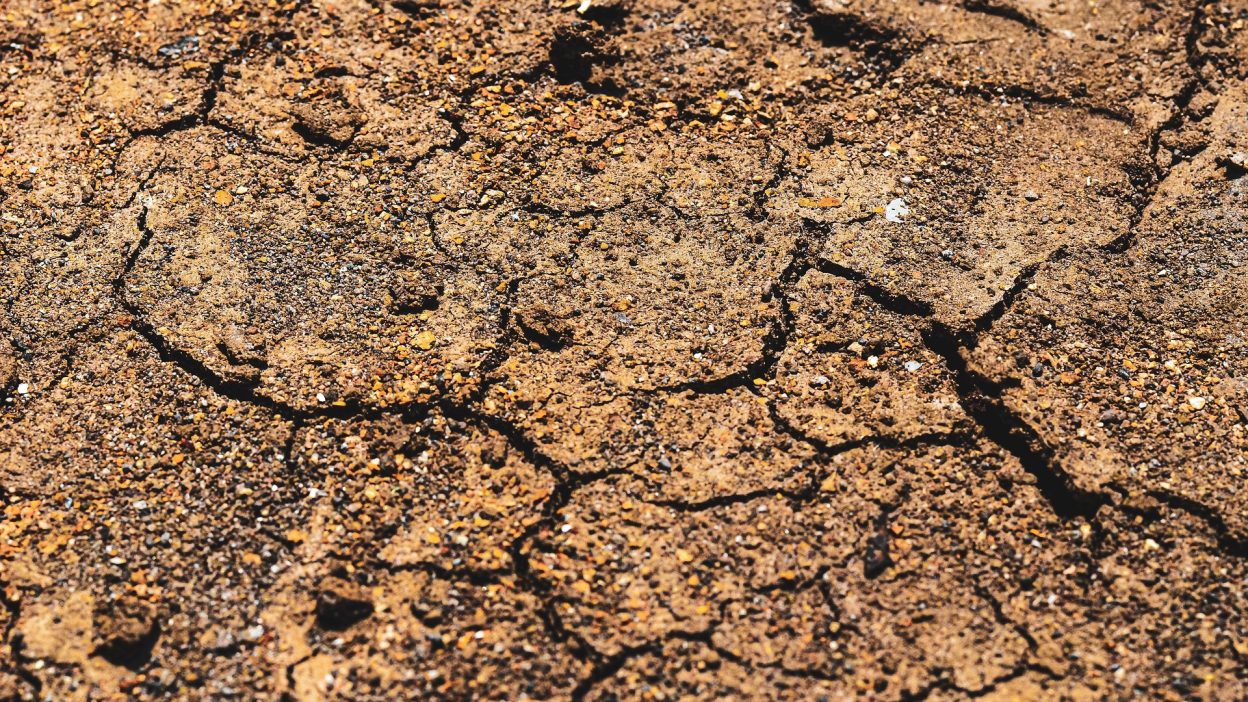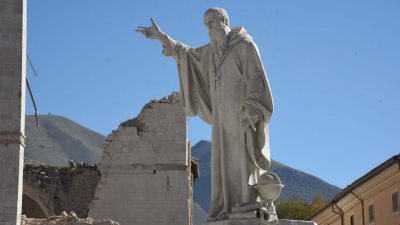The Day The Mediterranean Drowned In Chaos
1. A Catastrophe Unleashed: The 365 Crete Earthquake’s Wrath
On the morning of 21 July 365 AD, the Mediterranean was rocked by one of the most devastating earthquakes in recorded history. With an estimated magnitude of 8.0+, this seismic event struck near Crete, sending shockwaves that were felt as far as Italy, Greece, and North Africa. The destruction was swift and merciless, leaving thousands buried under rubble and entire cities in ruins.
But the worst was yet to come. Within minutes, the earthquake triggered a colossal tsunami, sending walls of water crashing onto coastal cities. Alexandria, one of the greatest metropolises of the Roman Empire, saw its streets flooded, its people washed away, and its infrastructure reduced to debris. The earthquake and tsunami combination ensured that this disaster would be remembered for centuries.
2. The Tsunami That Followed: A Second Wave of Death
The earthquake alone was catastrophic, but the ensuing tsunami magnified its horrors. Historical accounts describe how the sea first receded, exposing the seabed and leaving ships stranded. Then, without warning, an enormous wave surged back, swallowing everything in its path.
Alexandria suffered immensely, with ships thrown onto rooftops and thousands of residents drowned instantly. The tsunami’s reach was vast, devastating Libya, Egypt, Greece, and the Levant, proving that this was not just a local tragedy but a Mediterranean-wide catastrophe. With no warning systems in place, people had no chance to escape, making the tsunami as deadly as the quake itself.
3. A Trail of Corpses: Death Toll, Injuries, and the Scale of Destruction
- Mass Deaths Across the Mediterranean: Historical records estimate a death toll of over 50,000, though some experts believe the number could have been much higher, given the lack of accurate ancient records. Many bodies were never recovered, lost to the sea.
- Crete and Alexandria: The Worst-Hit Regions: Crete, being at the earthquake’s epicentre, saw widespread destruction, while Alexandria witnessed catastrophic flooding and mass casualties. Roman and Greek cities along the Mediterranean suffered structural collapses, fire outbreaks, and mass panic.
- Tsunami’s Impact on Trade and Economy: The tsunami devastated harbours, sank fleets, and disrupted the Mediterranean trade network, leading to severe economic losses for the Roman Empire. It took years to rebuild these critical trade routes.
4. Could the Roman Empire Have Prevented This Disaster?
Despite the might of the Roman Empire, there were no preparations for natural disasters of this scale. While ancient civilisations had observed patterns in earthquakes and tsunamis, there was no structured response plan, no early warning system, and no earthquake-resistant architecture.
Additionally, the Roman elites ignored previous minor tremors, assuming them to be insignificant. The heavy reliance on coastal cities for economic and military strength left them vulnerable. Had the Empire invested in reinforced infrastructure or relocated vital trade hubs inland, perhaps the toll could have been minimised. Instead, their inaction resulted in widespread devastation and an economy in turmoil.
5. The Gods’ Fury or a Scientific Nightmare?
For the people of the fourth century, science was not the first explanation for disasters of this magnitude. Many believed that the earthquake was divine punishment, a sign of the gods’ wrath against human sins. Pagan priests, Christian leaders, and superstitious citizens interpreted the disaster as retribution, sparking religious upheaval.
However, in reality, the earthquake was caused by the tectonic activity of the Hellenic Arc, a major subduction zone where the African Plate pushes beneath the Eurasian Plate. This region has a long history of seismic activity, and the 365 AD quake was one of the strongest ever recorded in the Mediterranean.
6. A Broken Empire: The Economic and Social Collapse After the Quake
The aftermath of the 365 Crete Earthquake was not just physical destruction—it was also an economic and social catastrophe. The Roman Empire suffered immense financial losses, with major trading cities crippled and harbours unusable.
The disaster led to food shortages, as agricultural regions were destroyed and supply routes disrupted. Survivors faced starvation, disease, and lawlessness as the Empire struggled to restore order. The quake also caused population displacement, as people fled devastated cities, leaving entire regions abandoned. This disaster left a long-lasting scar on the stability of the Roman Mediterranean.
7. Why the 365 Crete Earthquake Was So Unusually Destructive
- A Mega-thrust Event: Unlike regular earthquakes, the 365 AD quake involved a massive displacement of the seabed, leading to both violent shaking and an enormous tsunami. This dual impact significantly increased destruction.
- Unstable Foundations: Many Mediterranean cities, including Alexandria, were built on soft sediment rather than solid rock. When the quake struck, buildings collapsed easily due to the unstable ground.
- Lack of Preparedness: The Roman Empire had no earthquake-resistant architecture or emergency response systems, making it impossible for people to survive such a large-scale disaster.
8. Did the 365 Crete Earthquake Trigger More Disasters?
Some historians and geologists suspect that this earthquake was not an isolated event but part of a larger seismic chain reaction. Earthquakes along the Hellenic Arc and Eastern Mediterranean faults became more frequent in the years that followed.
Furthermore, the tsunami’s force reshaped coastlines, permanently altering parts of Crete, Libya, and Egypt. Some coastal areas sank beneath the sea, while new islands emerged from the ocean floor. This was not just a disaster—it was a complete transformation of the region’s geography.
9. Lessons Ignored: Could a Similar Earthquake Strike Crete Again? (Conclusion 1)
Despite its ancient occurrence, the 365 Crete Earthquake serves as a warning. The Mediterranean remains a highly active seismic region, and scientists believe that another massive earthquake could strike at any time.
Today, Crete and its surrounding areas are far more populated than they were in 365 AD, meaning the potential death toll could be even higher. However, many Mediterranean nations still lack proper earthquake and tsunami defences, making them just as vulnerable as they were centuries ago.
10. History Repeats Itself: Are We Ready for the Next Mediterranean Disaster? (Conclusion 2)
If history has taught us anything, it is that natural disasters do not discriminate. The 365 Crete Earthquake proved that even the mightiest empires could fall to the forces of nature. While modern technology allows for better monitoring and preparedness, many countries in the Mediterranean are still at risk.
If another earthquake of this magnitude were to occur today, the devastation could be even worse. The question is not if another disaster will happen—but when.
5 Short FAQs
1. How strong was the 365 Crete Earthquake?
It was estimated to be Mw 8.0+, one of the most powerful earthquakes in Mediterranean history.
2. How many people died in the disaster?
Over 50,000 people perished, but the true number may be much higher.
3. What regions were affected by the tsunami?
The tsunami impacted Crete, Greece, Libya, Egypt, and the entire eastern Mediterranean.
4. Could another earthquake like this happen today?
Yes, scientists warn that Crete and the Mediterranean remain highly vulnerable to seismic activity.
5. How did this earthquake affect the Roman Empire?
It caused economic collapse, mass displacement, and infrastructure destruction, weakening the empire’s grip on the region.




